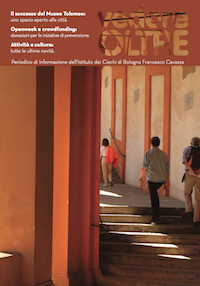Who has not heard at least once in their life about the Braille system? About Braille writing?
An alphabet of dots which is read with one's fingers, extraordinarily precious for millions of blind people around the world.
The alphabet was invented by Louis Braille in 1825.
He was a blind boy who attended the Institute for Blind Youth in Paris after losing his sight accidentally when he was wounded in his father's shop.
In 2007, our national Parliament, at the instigation of the Blind Italian Union, passed a law so that February 21 would be a day dedicated to Braille, remembered and celebrated with special initiatives in all cities and districts of Italy.
Since then, each year, events and initiatives are held in every Italian city to raise public awareness about the Braille system and the wonderful outcomes that people living with blindness are able to achieve thanks to this most valuable invention. Among the countless events, a different location is chosen where a national-level initiative is organized, involving local and central authorities, industry experts and academics who recall in various ways the merits of the reading and writing system which has allowed broad access to education and culture for millions of blind people around the world.

This year, the city of Bari was selected for the national event held in a school attended by hundreds of girls and boys who demonstrated a profound interest and curiosity for Braille. Together with the President of the National Association of Italian Municipalities, Antonio De Caro, host of the event, the Union re-launched the appeal so that in every Italian municipality there is a public place dedicated to Louis Braille: a street, a square, a garden, as it has already been done in many cities such as Cagliari, Bologna, Turin, Catania, Rome, etc. This will help citizens preserve and revitalize the memory of a man of such great cultural importance all over the world.
Today, reading and writing in Braille is done through traditional methods such as embossed paper with dots, and with technologically advanced applications such as the Braille display, an electro-mechanical device for displaying Braille characters, usually by means of round-tipped pins raised through holes in a flat surface, or virtual Braille through mild and rhythmic pressures of the fingertips on the touch screen of regular smartphones. Thanks to these state-of-the-art technology solutions, blind people today can independently read and write emails, SMS, texts, and notes, using regular tablets and smartphones available on the current mainstream market.
So, Braille is indeed a brilliant invention, with its six dots, which later became eight, reproducing every combination needed to represent letters, numbers, punctuation marks, scientific and mathematical symbols, as well as music scores.
This is an invention that has led the way to literacy, education and culture for millions of blind people in the world, enabling the most capable and worthy among them to reach the highest heights in the most diverse areas of our civil society. An invention for which we must give credit to Louis Braille, who is remembered and honoured all over the world. In Italy, we can and must dedicate specific places and infrastructure in our cities to honour his name in order to convey his reputation, merit and fame for contemporaries and for posterity.





.png)